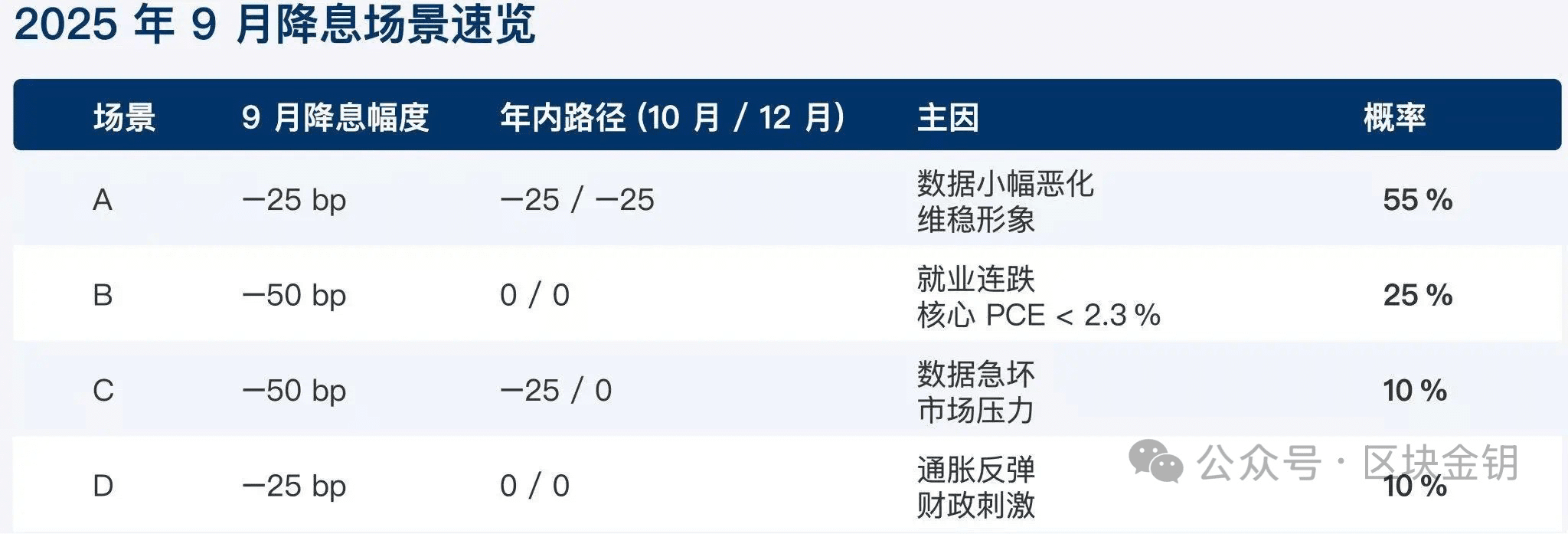In September, the Fed's interest rate cut has almost become a market consensus, but whether to cut by 25BP or 50BP has become a hot topic of discussion.
In last year's election, the Fed cut 50BP in one go on September 19 to assist Biden. This year's situation and rhythm are similar, and the market is beginning to speculate whether there will be a 50BP cut to make up for the missed cut in July due to delayed employment data.
Before the FOMC on September 18, there are four data points to reference: two CPI reports in July and August, one PCE in July, and one non-farm payroll in August. Additionally, the Q2 annualized GDP growth of 3.0% in the U.S. appears strong, but is actually affected by inventory and trade distortions caused by tariffs. After stripping away this 'noise', the final domestic sales growth was only about 1.2%, one of the lowest growth rates in the past two years. The full-year GDP growth is expected to be about 100 basis points lower than last year.
At present, the probability of a 25BP cut is relatively high. However, if subsequent data worsens, the possibility of a one-time 50BP cut will significantly increase. Even if only 25BP is cut in September, it may follow a rhythm similar to 2024, with additional cuts of 25BP each in October and December, resulting in three consecutive cuts.
As U.S. economic data weakens, the Fed's choice of options is quickly narrowing. Proactively guiding a 50BP cut could leave enough policy space, but may make the market feel pressured; balancing these considerations, a 25BP cut is more prudent, as Powell may just want a smooth landing.
If there is a rate cut in September, will Bitcoin continue to rise?
From a logical standpoint, interest rate cuts enhance liquidity, which is favorable for Bitcoin. However, market expectations may have already been priced in, and when the rate cut actually occurs, there could be a 'realization of benefits', leading to short-term fluctuations or even corrections.
If the interest rate cut is due to concerns about an economic recession, risk aversion may strengthen the dollar in the short term, putting pressure on risk assets, and Bitcoin may decline alongside U.S. stocks.
More critically, the interest rate cut may trigger a 'global capital retreat': the decline in interest rates reduces dollar yields, and international capital may withdraw from the U.S. to flow into other high-yield markets. If the market believes the U.S. economic outlook is poor, the attractiveness of dollar assets may decline, potentially triggering capital outflows. U.S. stocks are already at high levels; if the rate cut is seen as a 'signal that the economy has peaked', funds may withdraw early, leading to reduced risk appetite and pressure on Bitcoin. Based on past experience and recent performance, when U.S. stocks fall, Bitcoin is likely to follow suit in the short term.
The funding in the market that pushes up Bitcoin and Ethereum is likely sourced from U.S. stocks. After large funds withdraw from the U.S. market, they may not immediately flow into the crypto market, but could first observe or turn to cash/gold. Once market sentiment stabilizes, and dollar liquidity eases, it could continue to push Bitcoin higher.
Thus, the first wave of impact from the interest rate cut is a correction in risk assets, and the second wave is a repair rally driven by liquidity: the interest rate cut leads to a decline in dollar yields and capital outflow, potentially causing U.S. stocks to fall and putting short-term pressure on Bitcoin. Subsequently, as the dollar weakens and liquidity is released, Bitcoin may recover and rise in the medium term.